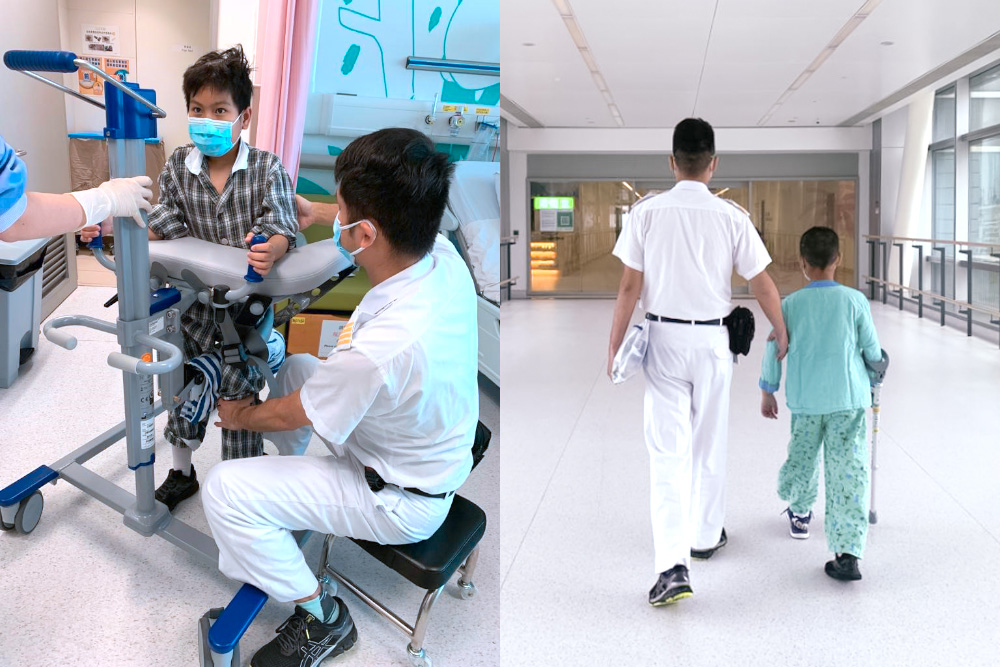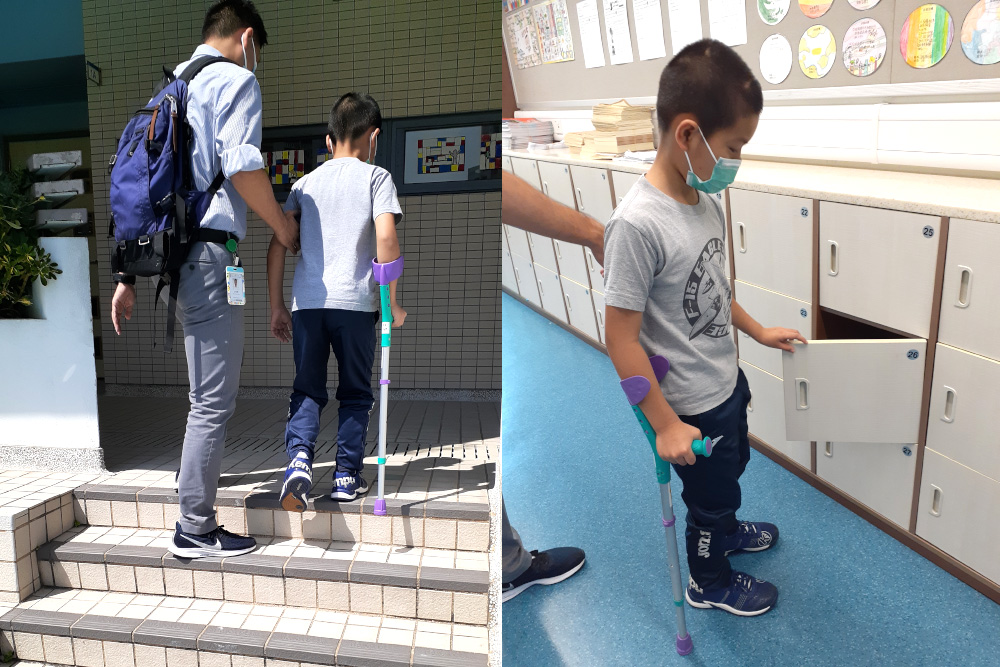病童故事
劍擊小子再上征途


某周六,銘熙踩單車後說無力行路。父母以為他只是玩得太累,休息一晚便會恢復,但翌日左邊肢體未能郁動,於是到急症室求診,照X光後竟發現是腦出血傷害了神經線,被送到深切治療部。他的媽媽回想:「當晚香港兒童醫院神經外科的何醫生聯絡我們,透過視像解釋銘熙的情況及治療方法,即是要做手術。」銘熙翌晨十時轉到兒童醫院,下午三時接受磁力共振檢查,以確定血管畸形的位置及大小等。 媽媽回想:「我記得第二天是清明節,何醫生再約我們在醫院講解手術流程和風險。他解釋得很清楚,所以我們對整個團隊很有信心,決定讓銘熙接受手術。我覺得兒童醫院所有事都做得很有效率,快得我們根本沒有時間去彷徨—一入院即安排檢查,見醫生後第二日已經可以做手術。」 較輕微的腦動靜脈畸形一般可以採用微創或放射治療方式,去萎縮和栓塞有問題的血管部位。不過,由於銘熙動靜脈畸形的病灶較大並在腦組織接近表面處,且已經出血,故需要開刀切除畸形血管及清走血塊。手術早上八時開始,直至下午五時才完成,坐在手術室外的父母心亂如麻。「我們一直留意進出手術室的職員,看見有人拿著血包進去,就會想是不是銘熙需要輸血,心裡有很多雜亂的想法。」 手術成功完成,銘熙於深切治療部接受觀察。醒來後,他對身邊各種儀器充滿好奇,一一詢問它們的用途,更學會監察自己的維生指數,一發現不妥就即時通知醫護人員。媽媽很感謝院方的恩恤安排:「深切治療部的醫生很好,容許我全日陪伴在側,真的令銘熙安心不少」。 銘熙手術後腦部仍有少許腫脹,左邊身體尚未恢復活動能力。物理治療師於是多管齊下,以針灸及電療刺激他的肌肉,及安排復康鍛鍊。媽媽說:「雖然醫生說過手術後三個月是復原黃金期,我們也作了打算,即使辛苦一點也要讓銘熙密密做復康治療,但沒想到手術後已即時有物理治療師跟進,安排每日兩次在病房進行治療,即使假日也無間斷。我也很驚訝專職醫療團隊所有程序都完美地緊接,例如早上物理治療師才說銘熙的腳踝不夠力,下午就有義肢及矯形師來為他度身製作腳托。」 

物理治療師根據銘熙的身體狀況安排循序漸進的訓練,最先是利用輔助器練習走路,之後改用拐杖。媽媽從中看到兒子堅毅的一面:「治療師叫他睡覺前在走廊行三圏,他便說要行十圈,雖然疲累令步速越來越慢,但他完全沒有怨言,默默堅持走完十圈才回房間。」 銘熙出院後,每天回醫院做物理治療,復原進度理想。物理治療師於是到學校視察,看看設施能否配合,讓銘熙安全地上學。爸爸讚賞整個過程超出他預期:「治療師由銘熙落校車一刻開始,仔細了解他在校園內的日常行動,課室、座位、儲物櫃、樓梯、走廊、操場、禮堂及廁所都一一查看,並建議學校讓他乘搭升降機,坐最近門口的位置等。」對於能夠重返校園,銘熙顯得很開心,指同學都很好奇地爭相看他頭頂的手術疤痕。 
當銘熙腿部的力量漸漸恢復,治療師便為他度身訂造不同的肌力及核心訓練,為渴望重返賽場的他打好基礎。 

術後三個多月覆診時,醫生講解磁力共振掃描報告,顯示腦血管正常、手術傷口已經癒合,活動能力大致恢復,一家人放下了心頭大石。他們也終於聽到醫生說銘熙可以自由進行不同運動,包括劍擊,意味銘熙咬緊牙關撐過訓練的努力沒有白費。銘熙感激幫過他的人:「多謝醫生、物理治療師和爸爸媽媽。經過今次手術後,我更加不怕困難,比以前更捱得到刻苦訓練。」他已準備好重新向劍擊之路進發! 

|





